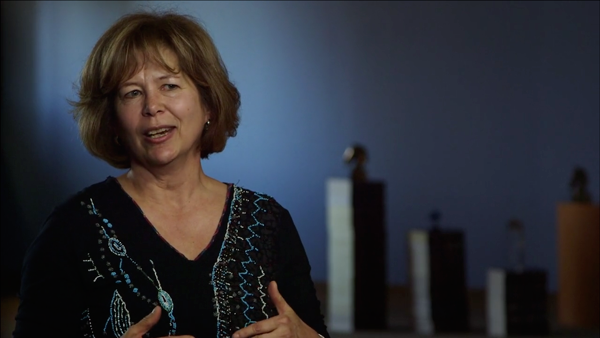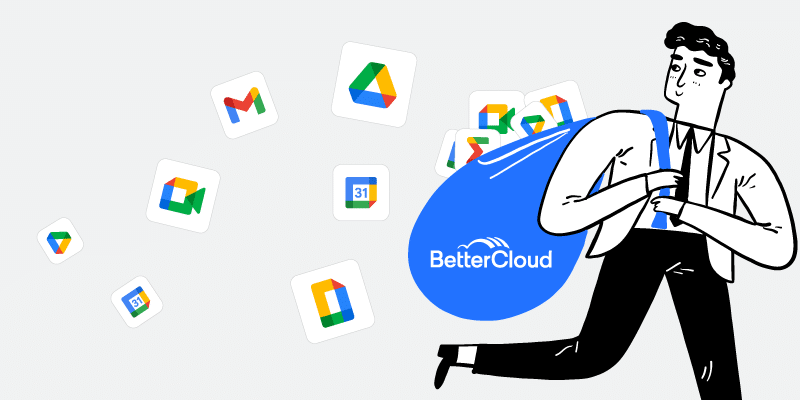Successful Strategies for Improving User Adoption of New Technologies
June 23, 2016
4 minute read

User adoption can be a tricky hurdle for IT.
More often than not, employees are resistant to change and training sessions are ineffective. Brandon Williams, Director of Google Operations for the State of Colorado, shared a few helpful (and surprising) strategies for improving user adoption of new technology.
To hear how Williams was successful in improving user adoption (for 30,000 employees, no less), watch the video above.
First, Don’t Do Things The Traditional Way
“Some things we tried worked really well. A lot of stuff we tried—we failed miserably. With each failure, we learned how to do it differently, and we learned how to come back at it,” said Williams.
Deep Dives:
Learn More from Brandon
Evaluating Third-Party Apps and Helping Employees Do Their Jobs Better
Working with Users to Design Long-term Solutions that Scale

Case Study: State of Colorado Saves $100,000 With BetterCloud

The Rising Tide: How One IT Team Redfined Emergency Communications
He says early on, his team tried the “traditional IT route”: They went to the IT directors and executive leadership and told them, “This cloud platform [Google] will change the way your employees work. This is it. This will solve a lot of problems.”
It turns out: That was the wrong approach.
“We found pretty early on, that was not a great move,” said Williams.
Instead, Find Staff with the “Candy Dish”
A far more effective strategy was seeking out people who had a “candy dish”—aka the non-IT technology innovators on staff.
“We realized that we had a power in staff that we hadn’t really tapped into. We call it shadow IT. You know who they are. They’re the people in your organization who, when you run into a computer problem, instead of calling the IT help desk, you go to this person down the hallway and say, ‘Hey, I can’t get my mobile phone to connect.'”
To get started, Williams and his team initially targeted admins, office managers, executive suite admins, and people sitting at the front desks. “Then it spooled out to customer service, training officers, communications officers, and others that have a high person-collision ratio. If people talk to others as a part of their job and the likelihood is high that they’re dealing with people under pressure situations who need help or info—hence the placating candy dish—they are the interlocutors we thought were important targets,” he said.
His team put in lots of face time, asked questions, and followed leads. “We did this will all the agencies. Some [were] remote so we had to use Hangouts or other methods, but we worked really hard to get around the state and meet people—particularly the service desk embedded from the Office of Information Technology in our departments,” he said.
These people became “a great resource for us to understand who those technology innovators were, locally,” he said. “That’s how we got the message out. If the person who has a candy dish isn’t happy with the technology, nobody’s happy. Everybody’s going to hear about it.”
“Draw Them into the Family”
“It was important to us to go to the water coolers, to go to the people with candy dishes. [To] sit down shoulder-to-shoulder with them, stare at the screen, make sure they were comfortable, and understand it,” said Williams.
“They’re around. So we changed the way the team here operates—to be able to tap into it, ask them questions, get their feedback, and really draw them into the family.”
Create Disciples
How does Williams—whose IT team consists of only three people—manage to successfully educate thousands of employees and multiple agencies spanning 64 counties across the state of Colorado?
His strategy is simple yet powerful: He empowers people to share what they’ve learned. He gets them excited about the technology.
“How is he going to spread this knowledge if he doesn’t have disciples?” said Denise Stepto, Director of Communications and Media Relations for the Colorado Department of Local Affairs.
“He’ll kind of spool you up. ‘I’m going to teach you all these things. Now, go out and teach it.’ And he does that because that way, there are more of him,” she said.
“The way he shows me things, I’m so excited that I know how to do this cool thing that I tell everybody,” she added. “That growth is exactly what we need to see in the IT field. He’s always giving you this gift of knowledge and that is something that is very, very unique to me.”
Make Training a Two-Way Street
Williams shared a few tips that can make user training more effective:
- Make it hands-on and tactile—it makes a big difference. “[We started] organizing workshops to solve challenges, instead of just doing one-way training. You bring users into a room, identify the challenges, and then you sit down and help them figure out a solution using these tools,” said Williams.
- Don’t be faceless. “It was really important to us that our users know who we are,” said Williams. He says his team is available on live video chat—all day, every day. “They can ping us. We go out and spend a lot of time at the agencies doing FaceTime.”
- Teach people how to fish. Stepto says Williams knows that it’s about the people, not the technology or computer. “It’s about the user. He’s watching how people are moving and he’s saying, ‘You know what, I can make this even better for you by just showing you how to do this. I can teach you to fish.’ That’s his thing.”
To learn about other innovators in our Modern Workplace Innovators series, click here.








